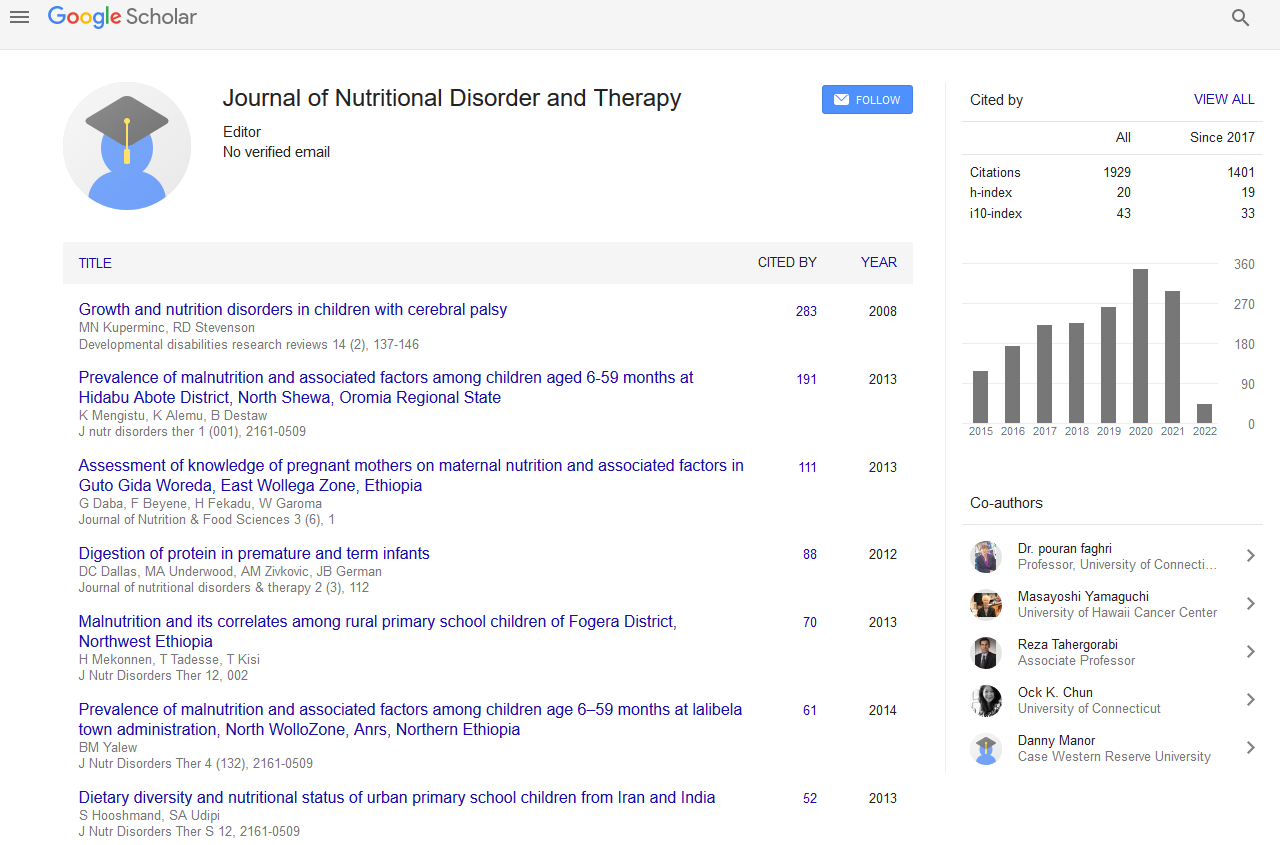Indexed In
- Open J Gate
- Genamics JournalSeek
- Academic Keys
- JournalTOCs
- Ulrich's Periodicals Directory
- RefSeek
- Hamdard University
- EBSCO A-Z
- OCLC- WorldCat
- Publons
- Geneva Foundation for Medical Education and Research
- Euro Pub
Useful Links
Share This Page
Journal Flyer

Open Access Journals
- Agri and Aquaculture
- Biochemistry
- Bioinformatics & Systems Biology
- Business & Management
- Chemistry
- Clinical Sciences
- Engineering
- Food & Nutrition
- General Science
- Genetics & Molecular Biology
- Immunology & Microbiology
- Medical Sciences
- Neuroscience & Psychology
- Nursing & Health Care
- Pharmaceutical Sciences
Abstract
Effect of Conjugated Linoleic Acids on some Bone Markers in patients with active Rheumatoid Arthritis who referred to the Rheumatology Research Center of Shariati Hospital: A double blind clinical control trial
Background & Objective: Rheumatoid arthritis (RA) is a chronic relapsing inflammatory multisystem disease with synovial proliferation and destruction of articular cartilage. It is the most common inflammatory arthritis, affecting approximately 0.5-1% of the general population worldwide. RA has served as a useful model for the study of many inflammatory and immune-mediated diseases. The exact explanation for RA isn't yet known. Recently, several studies have shown the possible role of reactive oxygen species (ROS) in the pathogenesis of RA. The destructive reactions by ROS can be improved by antioxidants. Antioxidants have beneficial effect for inhibition of inflammation related to neutrophil functions, Vitamin E as a potent antioxidant has an ability to modulate host immune functions, so it may be have positive effect on patients who suffer from RA.
Conjugated linoleic acids (CLAs) are naturally occurring isomers of linoleic acid found in meat and milk of grazing animals. Their anti-inflammatory effects that have been shown can protect bones from damage. The biological activities of CLAs, much attention has been due to their anticancer, antiatherogenic and antidiabetic effects, as well as their effect on increasing the bone mass. The role of CLAs in oxidative stress as an antioxidant has been investigated to elucidate its beneficial physiological effects. In previous articles we reported the effects of CLAs on RA by a randomized, double-blind placebo-controlled trial. Pain and morning stiffness were significantly lower in the group taking CLA or CLA plus Vitamin E, compared to placebo the group after 12 weeks of supplementation. We have concluded that CLAs may improve clinical outcomes; lower lipid peroxidation without negative effects on lipid profile and fasting blood sugar in patients with RA.
Published Date: 2020-09-17;


